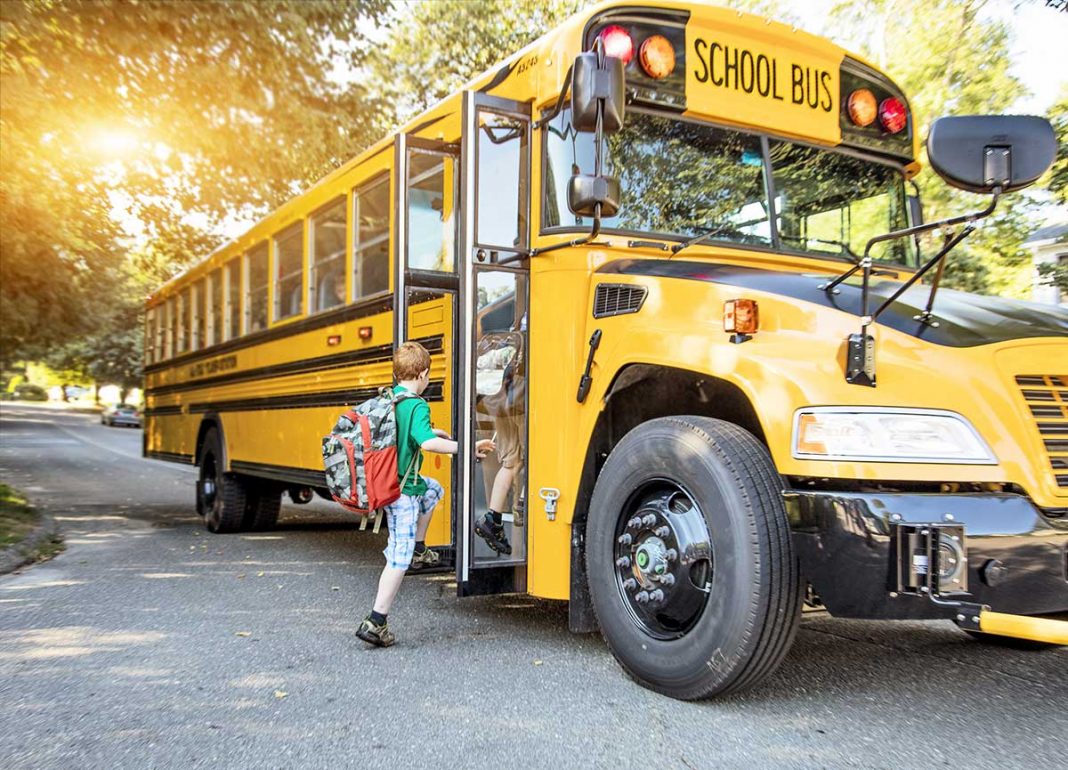TORONTO – The District of Sudbury and a location in British Columbia (which will be announced at a later date) have been selected by the Government of Canada for a school bus seatbelt pilot project. While Manitoulin Island school buses will not be included in the pilot project at this time, depending on the outcome of the pilot project this may take place in the future, suggested a representative of the Sudbury Student Services Consortium (SSSC).
Minister of Transport, the Honourable Marc Garneau, made the announcement on February 14. “The Government of Canada is pleased to collaborate with the government of British Columbia and with Ontario’s Sudbury Student Services Consortium on these important pilot projects involving seatbelts on school business,” he said in a release. “School buses continue to be the safest means of transporting children to and from school in Canada, but if there is an opportunity for improvement, we will explore all options as we continue to study and analyze the potential use of seatbelts on school buses. These pilots are an important element of our collective efforts to further strengthen school bus safety in Canada and we look forward to the findings.”
The pilot projects will involve a limited number of new school buses equipped with three-point seatbelts that follow the latest federal safety standards.
School buses are the safest way to transport an estimated 2.2 million Canadian children to school. Recognizing that seatbelts can provide an additional layer of safety in rare, but severe school bus collisions, these pilots are an important step in examining the optimal and most efficient use of this safety feature in Canada.
The SSSC as well as British Columbia expressed interest in this pilot. The Government of Canada is also open to partnering with other governments or jurisdictions who would be willing to step up and participate in a pilot.
“The Sudbury Student Services Consortium is thrilled to be working in partnership with Transport Canada on this very exciting project to support school bus safety. We are looking forward to working with our local school boards, school bus operators, students and parents on this very important initiative,” said Renee Boucher, executive director with SSSC.
“It looks as if three school buses in Sudbury will be included,” said Ms. Boucher. “No, buses on Manitoulin Island will be part of this pilot project. However, depending on how the project goes and what Transport Canada decides after seeing the results of the study, seatbelts may be included on school buses everywhere in the future.”
“Absolutely, I think this project is great news,” stated Ms. Boucher. “We have always talked about safety on school buses and how to ensure student safety. The (SSSC) bus operator members include operators such as A.J. Bus Lines and Brown Bus Lines on Manitoulin and they will all be part of the conversation. They will participate in all of the discussions as they usually do. They will be brought into the discussion on this pilot project along with all bus operators in our entire area.”
The need for pilot projects stems from the report of the Task Force on School Bus Safety, Strengthening School Bus Safety in Canada, which explains the considerations associated with installing and using seatbelts on school buses, such as proper seatbelt adjustments for children.
Each day Canadian children travel to and from school on 51,670 school buses. In July 2018, Transport Canada published new requirements to support the voluntary installation of three-point seatbelts on school buses. In January 2019, the federal, provincial and territorial Council of Ministers Responsible for Transportation and Highway Safety established a special task force to carefully examine the issue of school bus safety, both inside and outside the bus, with an emphasis on seatbelts.



